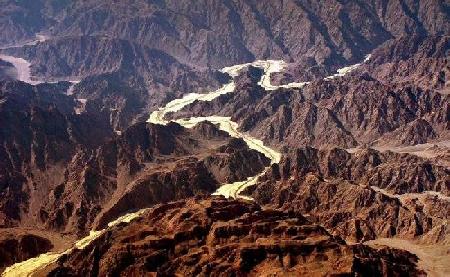 Taba is regarded as eastern gateway for Egypt that locates about 70km away from Aqaba Gulf. This unique position on the head of El Aqaba Gulg made it stopping point where all the caravans passing by Egypt in their way from Africa to Asia since the 14th century. It is regarded as a major tourist attraction because of its unique position, fascinating natural beauty, Turquoise water, and moderate climate throughout the year. It can be easily reached by air through the international airport that is located only 45km away. Shopping is a recommended activity for visitors of Taba because goods are displayed at better prices than Sharm El Sheikh and Namaa Bay.
Taba is regarded as eastern gateway for Egypt that locates about 70km away from Aqaba Gulf. This unique position on the head of El Aqaba Gulg made it stopping point where all the caravans passing by Egypt in their way from Africa to Asia since the 14th century. It is regarded as a major tourist attraction because of its unique position, fascinating natural beauty, Turquoise water, and moderate climate throughout the year. It can be easily reached by air through the international airport that is located only 45km away. Shopping is a recommended activity for visitors of Taba because goods are displayed at better prices than Sharm El Sheikh and Namaa Bay.


It is renowned for its stalls of aromatic spices and oil, and brightly colored handmade carpets, rugs, and wall hangings of the Bedouins. The area of Taba and the surrounding area is inhabited by many Bedouin tribes who earn their living from producing handmade products including jewels with Turquoise Sinai inlays, manual carpets and rugs, baskets and aromatic spices and selling it for tourists. There are numerous sports to be practiced on the golden sand shores of Taba including golf, tennis, and beach football. At the same time, it is the best place for enjoying water activities like windsurfing for the wind movement in that area. Snorkeling is another water activity that can be easily practiced in Taba Beaches because the coral reefs can be seen at a very shallow depth allowing the nonprofessional divers for seeing the exotic underwater scenery.

Situated in a privileged place on the entrance of the Gulf of Aqaba, Saladin Fortress was built by Saladin (Salah ad-din al Ayyubi) in 1170. He chose to build it on the Faraon Island ("the Pharaoh Island") on the road crossing the Sinai to the north of the Gulf of Suez, 250 m from the bank of the Taba. This strategic spot controls roads between the three banks of the Gulf of Aqaba. The fort covers an area of approx. 2200 m (65 m x 32.5 m). Throughout different eras, the citadel enjoyed a great impotence.
Remains of a Byzantine church from the time of Justinian VI were discovered at the site. There is evidence that it continued to prosper throughout the Islamic Period when pilgrimage to Saudi Arabia increased and throughout the Coptic Era. Enclosed within the fortress are: a fortified entrance; a mosque; a residence for the governor of the citadel; a number of cells for guards; three rooms; a water supply system; supply stores; and a big meeting room. The whole citadel was restored in 1986.
